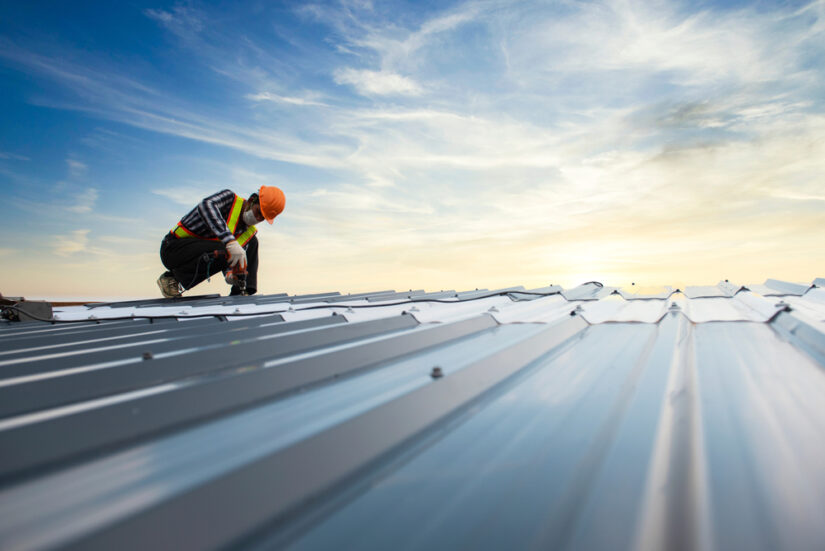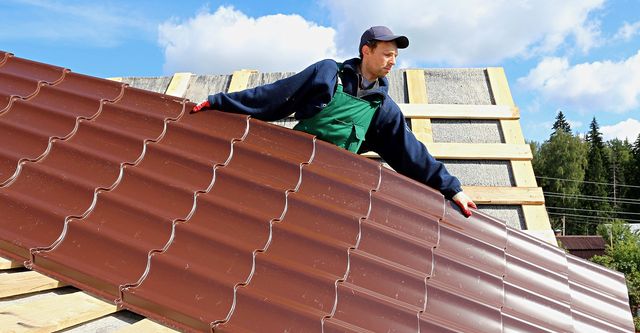Professional Tips for a Perfect Roof Flat Roof Setup Process
The installment of a level roof is a vital undertaking that calls for precise preparation and execution to make sure durability and efficiency. Secret factors to consider include selecting the ideal products, understanding the certain kind of level roofing system, and sticking to market criteria during the installment process.
Recognizing Flat Roof Covering Types
When thinking about a level roofing system installment, it is necessary to understand the numerous kinds readily available, each offering distinct benefits and negative aspects. The most common level roof covering types consist of built-up roofing systems (BUR), customized asphalt roofing systems, and single-ply membrane layers.
Built-up roofing systems consist of numerous layers of asphalt and really felt, providing excellent waterproofing and resilience. These roofing systems are typically chosen for domestic applications due to their simplicity of setup and repair work.
Single-ply membranes, such as EPDM, TPO, and PVC, are gaining appeal for their light-weight nature and simplicity of setup. EPDM, known for its long life, is specifically reliable in differing climates, while TPO and PVC offer premium power effectiveness and reflectivity.
Eventually, the choice of level roof covering type will certainly depend upon elements such as the structure's style, regional climate, and budget plan factors to consider. Understanding these choices is essential for guaranteeing an effective installment that meets certain requirements and demands.
Necessary Tools and Products
To attain an effective flat roof covering setup, having the right tools and products is vital. A well-appointed setup group guarantees effectiveness and high quality throughout the process. Trick tools consist of a tape action for accurate measurements, an utility knife for cutting roof materials, and a pneumatic nail gun for safeguarding membrane layers. Additionally, a warmth welder is essential for thermoplastic roof, while roof covering rollers help in attaining proper attachment.
In terms of products, selecting premium roof membrane layers is crucial. Adhesives and sealers proper for the picked membrane kind are likewise essential to prevent leaks and guarantee sturdiness.
Security equipment, consisting of harnesses and construction hats, must not be forgotten to protect workers throughout installment. Having a dependable ladder or scaffolding is crucial for secure accessibility to the roofing. Purchasing these vital tools and materials will bring about a much more reliable, efficient, and eventually effective level roof covering installment.
Preparing the Roofing Surface
Before setting any roof products, it is necessary to prepare the roof covering surface area completely to ensure optimum attachment and durability of the installation. This prep work process includes numerous important actions that should not be neglected.

Additionally, look for dampness and make certain that the surface area is totally dry. Any kind of entraped moisture can result in mold and mildew development and jeopardize the try this honesty of the roof. Utilize a dampness meter to confirm dryness. if required.

Step-by-Step Setup Refine
With the roofing surface area appropriately prepared, the emphasis moves to the step-by-step installation process that will ensure a durable and effective level roof covering system. Begin by outlining your products, including the membrane, adhesive, and any necessary devices such as rollers and energy knives. Step and cut the roof covering membrane layer to fit the roofing system dimensions, permitting for overlaps at joints.
Next, apply the glue according to the supplier's requirements, making sure even insurance coverage for ideal bonding. Thoroughly position the membrane layer a knockout post onto the adhesive, beginning with one end and functioning your way throughout. Utilize a roller to get rid of air bubbles and make certain maximum adhesion.
As soon as the membrane layer is securely in area, concentrate on sealing joints and edges (Flat Roof Installation in Cuyahoga Falls). Employ an appropriate sealer or tape to strengthen these areas, protecting against water seepage. Set up blinking around penetrations, such as smokeshafts or vents, to provide added protection
Maintenance and Inspection Tips

Begin by performing aesthetic inspections a minimum of twice a year, ideally in springtime and autumn, to identify any type of indications of damages such as splits, blisters, or ponding water. Pay special interest to seams and blinking, as these locations are prone to leaks.
Eliminate debris, such as branches and leaves, from the roofing surface area and water drainage systems to prevent water accumulation. Flat Roof Installation in Cuyahoga Falls. Guarantee that rain gutters and downspouts are clear to help with appropriate water flow
Furthermore, look for any type of indications of mold and mildew or algae development, which can jeopardize the roofing's stability. If you observe any kind of concerns, resolve them immediately to avoid much more substantial damage.
Consider engaging a specialist roofer for extensive evaluations and upkeep solutions. They can offer understandings on repairs, finishing applications, and other preventative measures to enhance your level roofing system's sturdiness. Prioritizing upkeep will certainly protect your investment and provide satisfaction.
Verdict
Finally, adhering to thorough prep work and installation methods is important for attaining a remarkable level roof covering. Comprehending the various sorts of flat roofing products and using high-quality items improves durability and performance. Regular maintenance and evaluations post-installation offer to expand the roofing's life expectancy and prevent possible problems. Engaging experts for installment and upkeep further makes certain that finest techniques are complied with, inevitably adding to a reliable and lasting level roofing option.
The installment of a flat roof covering is image source a vital task that calls for precise planning and implementation to make certain resilience and efficiency. Trick factors to consider include choosing the proper products, recognizing the specific type of flat roofing, and sticking to sector standards during the installation process.To accomplish an effective level roofing installment, having the right devices and products is paramount. Investing in these important tools and materials will lead to a much more reliable, reliable, and ultimately successful level roof installation.
With the roof surface properly prepared, the focus moves to the step-by-step installment process that will certainly make sure a long lasting and efficient flat roofing system.